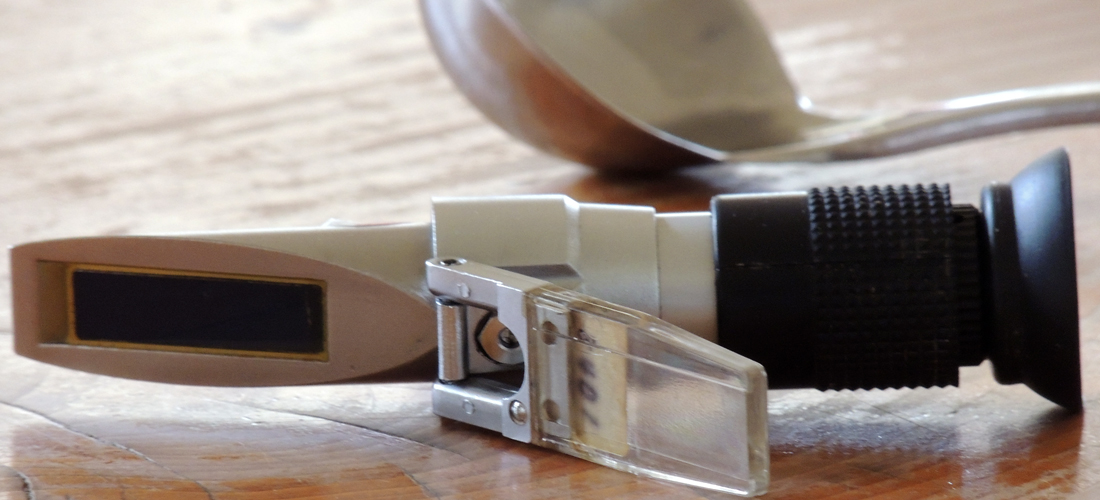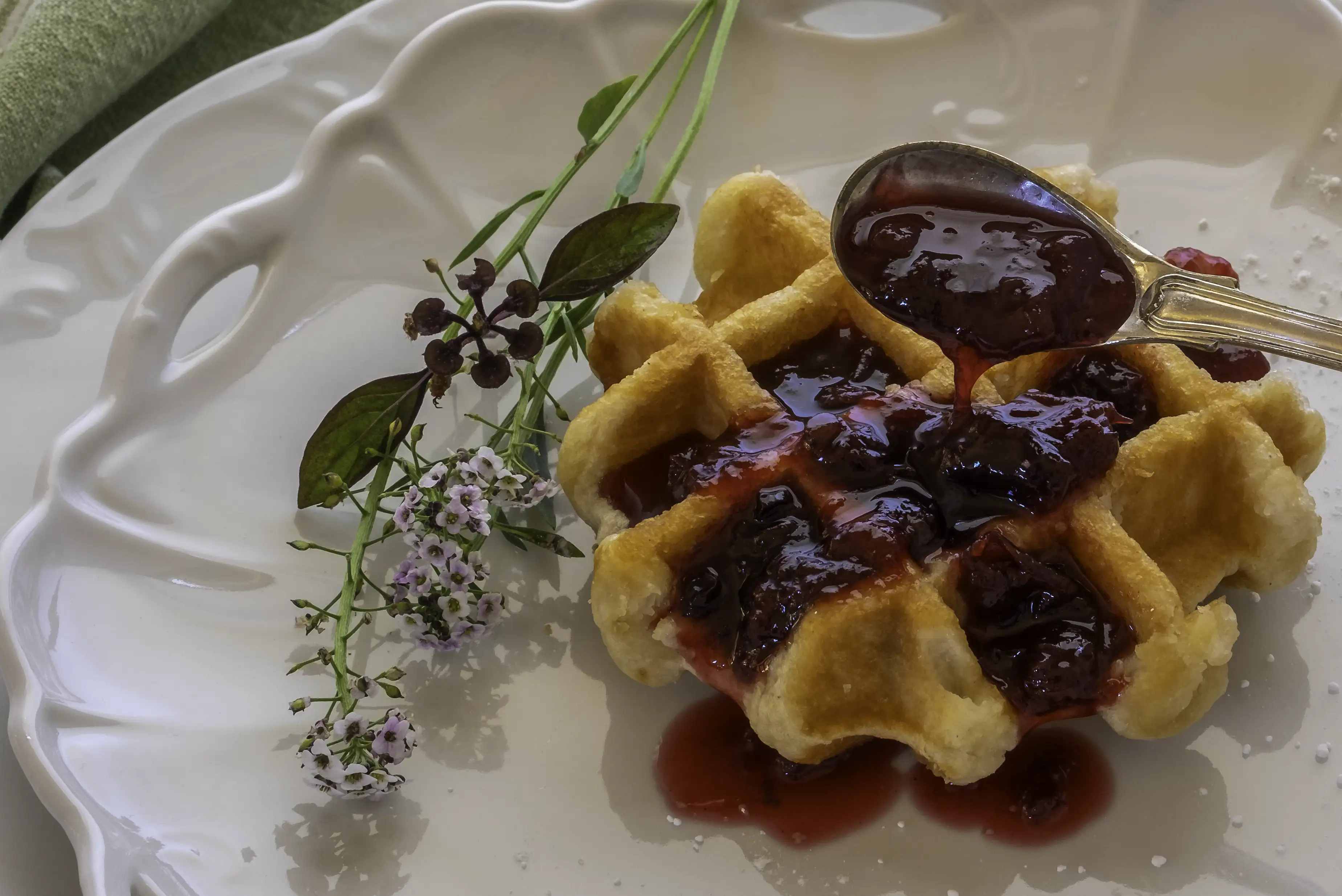
What Makes Jam, Jelly & Marmalade Set
- Food Science
Determining the setting point for jams, jellies and marmalades can seen daunting at first but once you understand the basic principles and with a little practice, the process will be demystified. Jam, jelly and marmalade are made from fruit boiled with sugar until the setting point is reached. The essential setting agent is pectin: a naturally occurring soluble, gum-like substance present in varying amounts in the pips, skin or pith and flesh of most fruits. Pectin gels when it is heated with the natural fruit acid and added sugar. As the preserve cools down, the pectin gels a setting point, if the ratio's are correct.
The degree to which a preserve sets is dependent upon the ratio between the fruit pectin, acid and sugar. While most fruit preserve require between 375 – 500 grams of sugar for every 500 grams fruit, the levels of pectin and acid varies considerably between different types of fruits. Pectin and acid variations can even occur within the same type of fruit, according to its age. Under ripe fruit is more acid and contains more pectin that ripe fruit, so it is important not to use over-ripe or damaged fruit in your preserve. Over-ripe fruit affects the setting point while damaged and/or mouldy fruit will affect the flavour and its storage life.
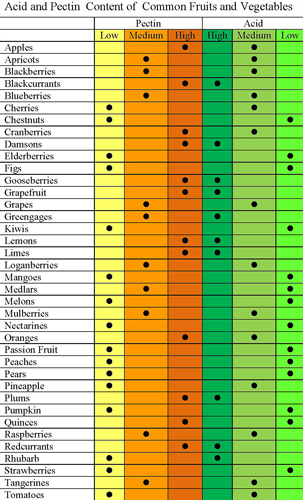
This table shows the pectin and acid content of common fruits and vegetables. Use this chart to create a myriad of different flavour combinations that will set. Combine low to medium pectin and acid fruits with high pectin and acid fruits. For instance add lemon juice (acidity) in apricot jam or combine blackberries and apples (pectin) and then add some lemon juice (acidity) for the perfect set.Once you get the hang of combining pectin, acid and sugar rations, making preserves will be de-bunked. Be creative and you will be rewarded with a well stocked pantry filled with a kalidescope of colour and accolades and requests from family and friends.
Home made preserves make wonderful personalised gifts, Use unusual jars and containers and add some colourful ribbon or raffia for a more natural look. Attach a hand made not and your homemade preserves will be transformed from an ordinary home made gift into an artisanal culinary creation.
FOUR METHODS TO DETERMINE THE CORRECT SETTING POINT
There are a number of different ways to determine if a preserve has reached the setting point. Try a couple of different methods and find the one you feel the most comfortable with. Good quality firm ripe fruit and getting the correct pectin, acid and sugar ratio are the foundations of obtaining the perfect set, but practice, patience and observation will be your kitchen hand maidens. EWhile there may be some disappointments along the way, once you learn how to read your boiling preserving pan and understand combining for the correct ratio's, success will prevail. Unless the preserve has been burnt, nay under-set preserve won't go to waste. They can be used as a base for fruit syrups or sauce for steamed puddings, pancakes, crepe and dessert cakes.
TEMPERATURE USING A SUGAR THERMOMETER
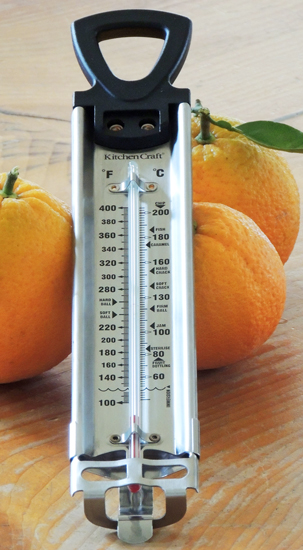 Setting point for jam, jelly and marmalade is 105 degrees C (220 degrees F) isa simple reliable way to test for the setting point is to use a sugar thermometer. Place the thermometer in your preserving pan after the sugar has dissolved and secure it to the side of the pan. The end of the thermometer must sit in the jam mixture and must be brought up to temperature in the boiling jam. Do not place a cold thermometer into the boiling jam as it likely to break. Once the boiling mixture has reached the correct temperature then your jam will set, once cooled.
Setting point for jam, jelly and marmalade is 105 degrees C (220 degrees F) isa simple reliable way to test for the setting point is to use a sugar thermometer. Place the thermometer in your preserving pan after the sugar has dissolved and secure it to the side of the pan. The end of the thermometer must sit in the jam mixture and must be brought up to temperature in the boiling jam. Do not place a cold thermometer into the boiling jam as it likely to break. Once the boiling mixture has reached the correct temperature then your jam will set, once cooled.
Plate wrinkle test
You can also check for setting point using the "wrinkle" test. Before cooking the preserve put 3 or 4 small heatproof plates in the freezer. Once your preserve has boiled for several minutes, take the pan off the heat and carefully spoon a little onto one of the cold plates. Let it stand for a minute to cool then run your finger through it. If the surface wrinkles and a "track" remains where your finger has moved through the preserve then it will set once the preserve has completely cooled. If it is still quite liquid then put the pan back on the heat and boil for another 3 to 5 minutes before testing again.
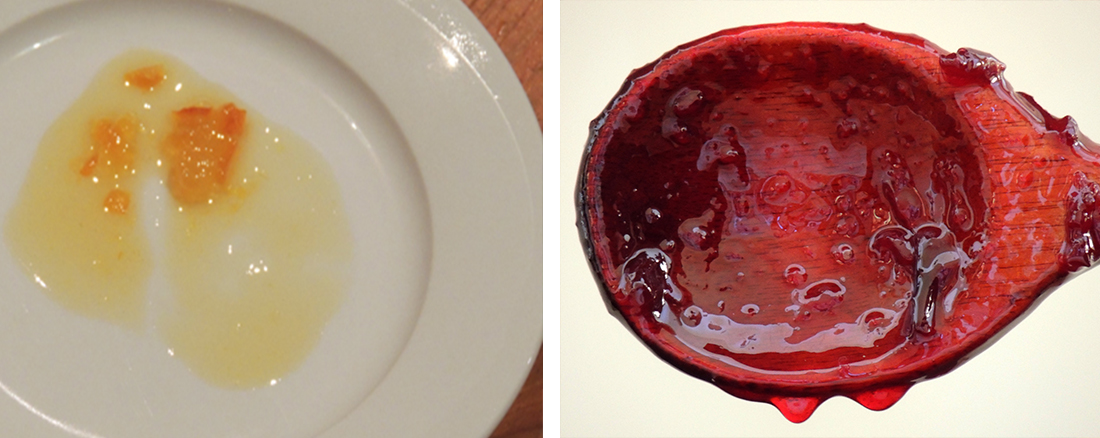 Wrinkle Test - left image: Flake Test - right image
Wrinkle Test - left image: Flake Test - right image
Flake test
Stir the jam, jelly or marmalade with a wooden spoon and hold the spoon flat at 90 degrees to the pot. A jam that will not set runs off the spoon in one drip line. When the jam is ready, the drip line will separate into two lines and run from both sides on the curve of the spoon and not from a single point. Test at 2 to 3 minute intervals until the jam reaches the set point.
Pectin can also be destroyed by extended boiling so make jam in a large saucepan (the fruit and sugar mixture should not come more than one third up the side of the pan) so that the mixture boils rapidly, and start testing for setting point fairly early.
Refractometer
Boil the preserve and use the refractometer to regularly test that it has reached its setting point at 64 Brix. To test, place a small amount of preserve on a spoon and gently smear it across the glass plate, ensuring its completely covered. Allow to cool slightly and close the top face plate of the refractometer. Looking through the eye piece and into natural light, read the Brix scale which will appear as a blue line across the numeric scale. When it has reached 64 Brix, remove from the heat and progress to the bottling stage. If further cooking is required, return to the heat and continue to re-test until 64 Brix is reached. When re-testing ensure the glass and top place are clean and dry in between each test. Refractors are often also used by home brewers to test the sugar content of brewing mixtures.
How does it work? The refractometer works much like a prism and will react differently to light (by giving a reading on the scale) depending upon the amount of sugar that's available in the liquid sample that is held between the top face plate and the main prism assembly.
